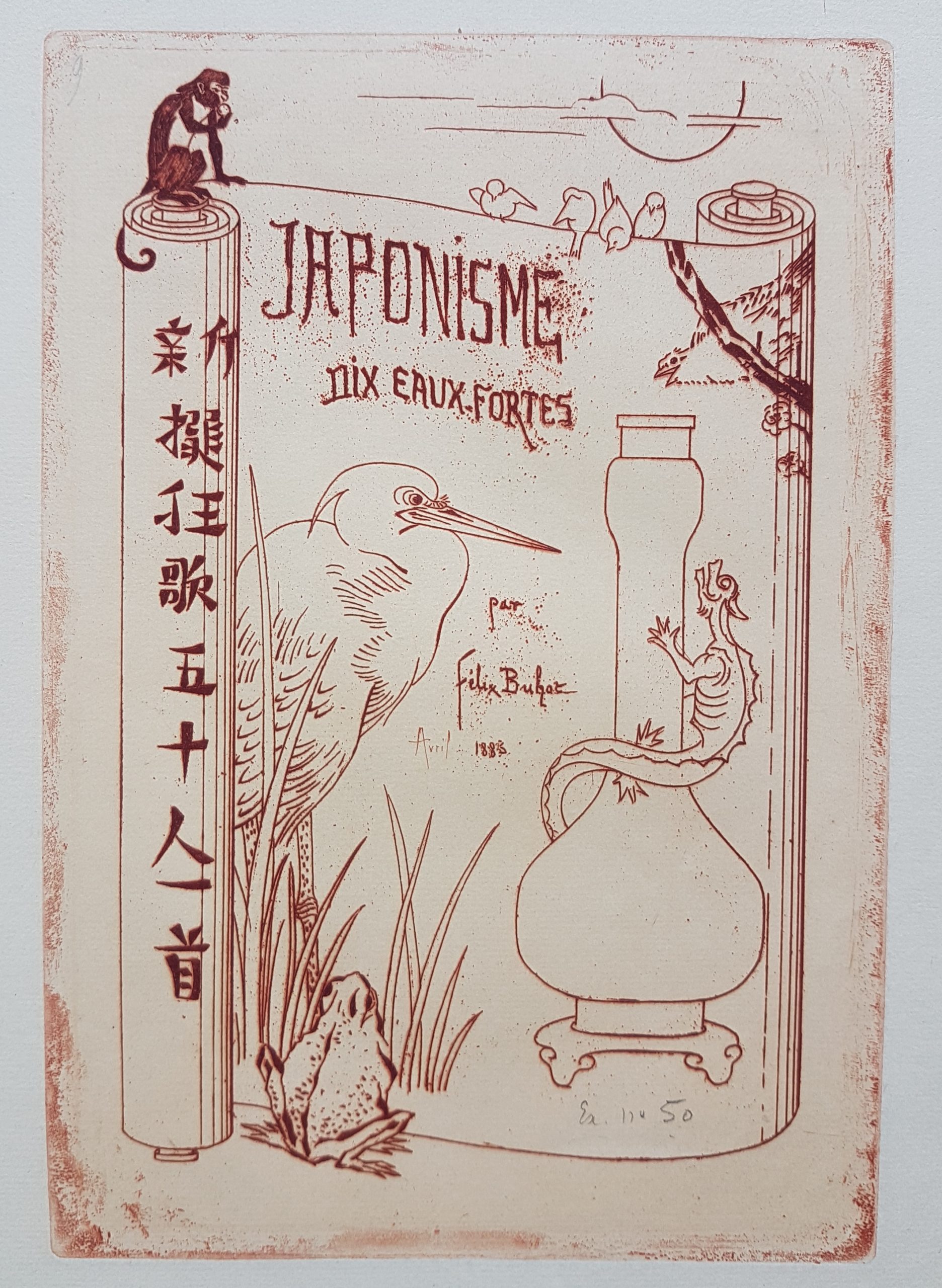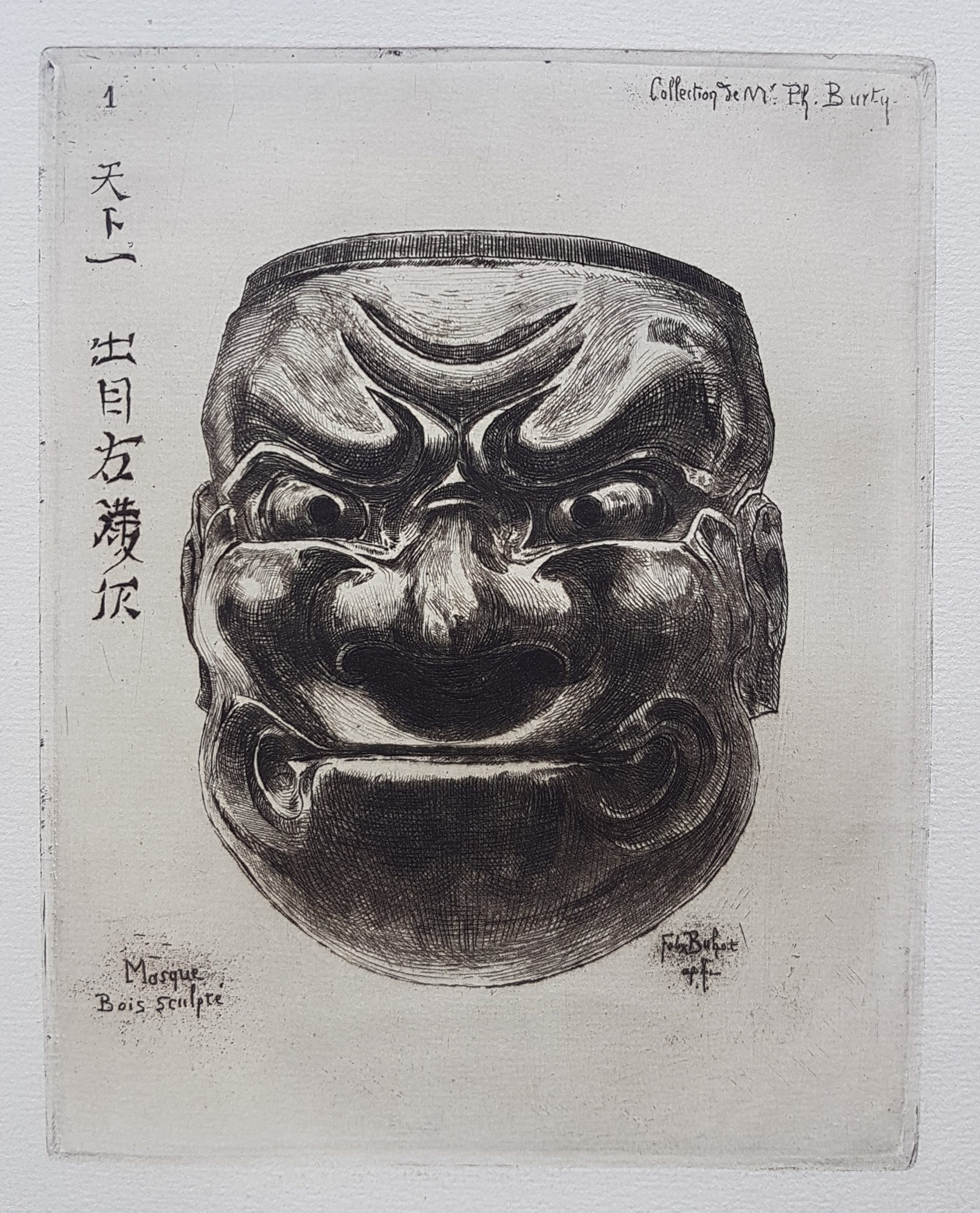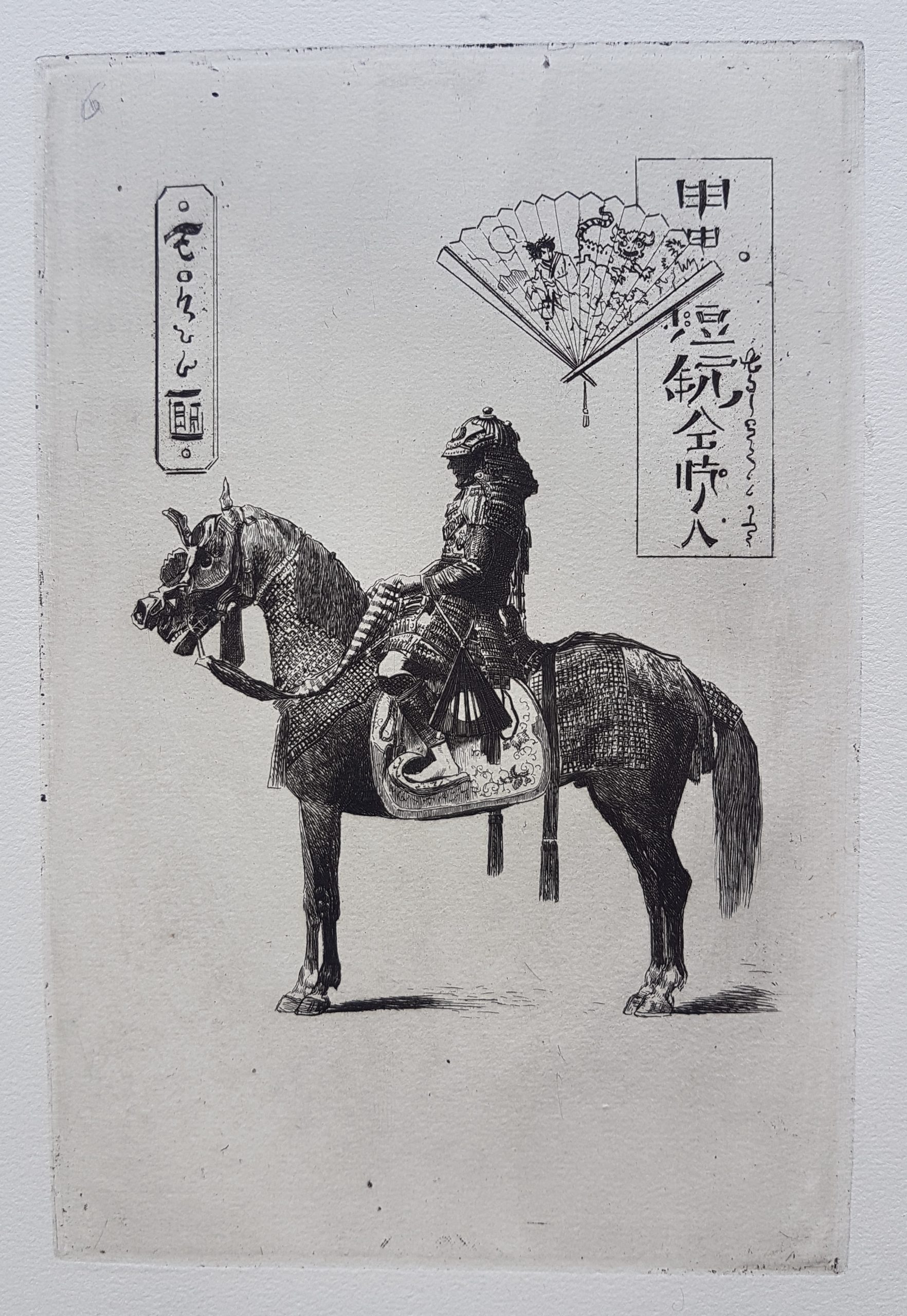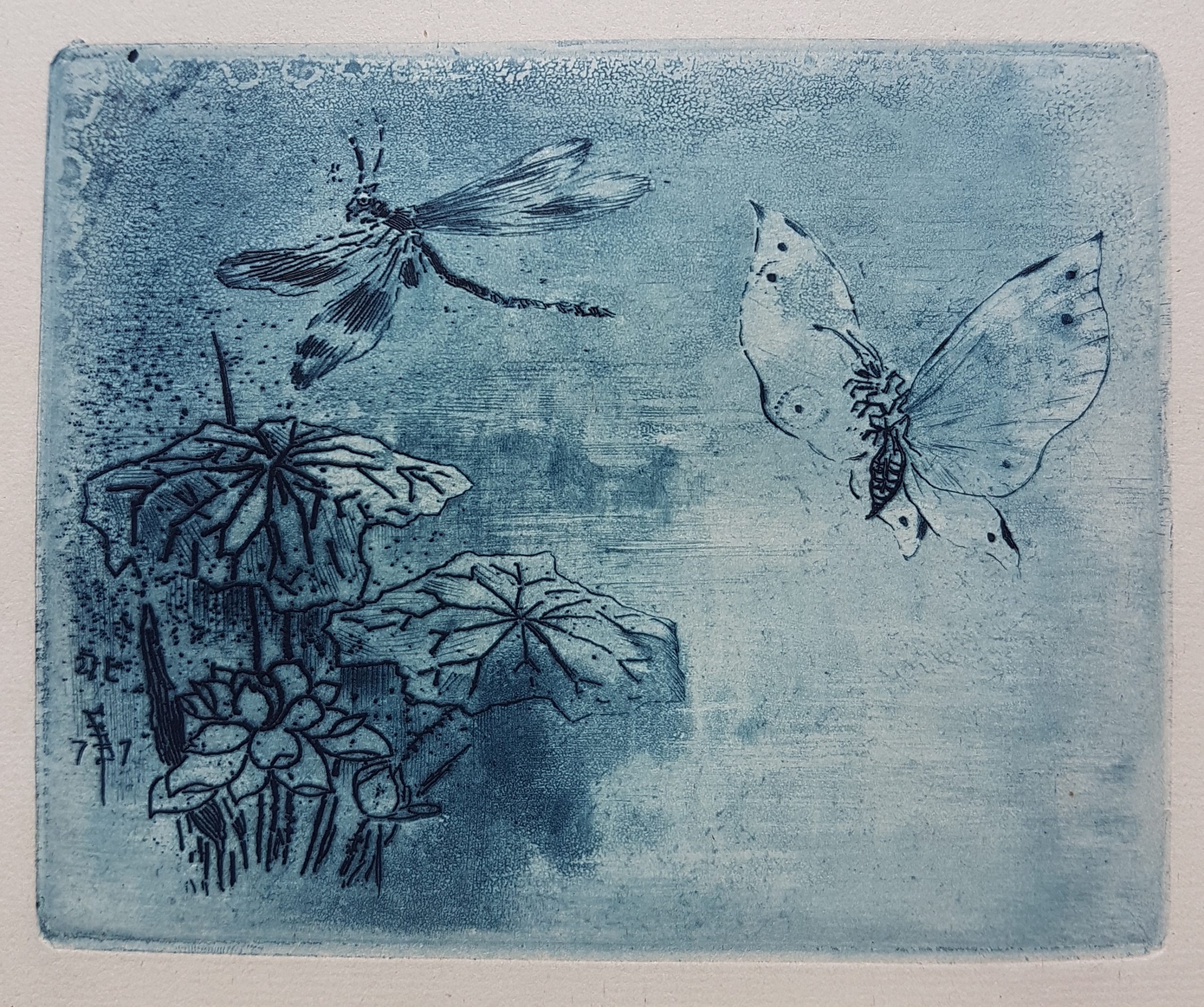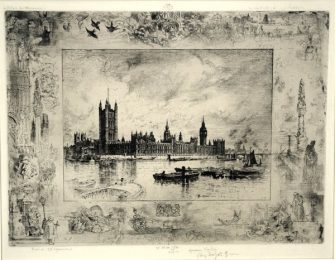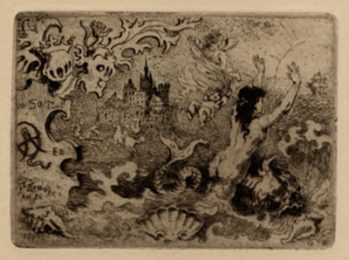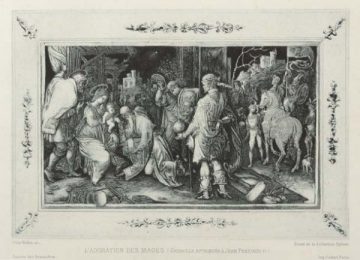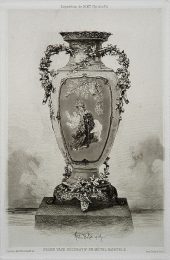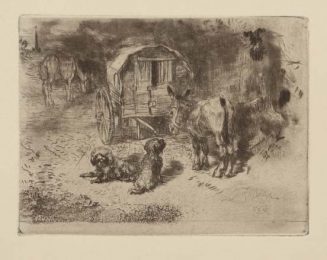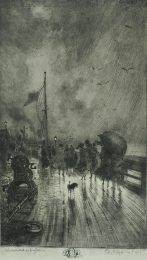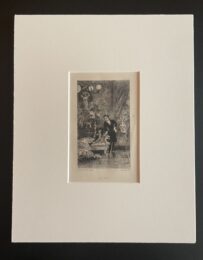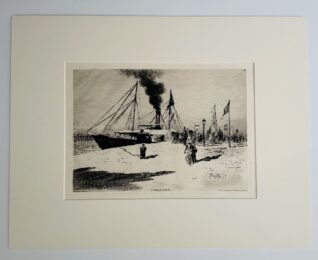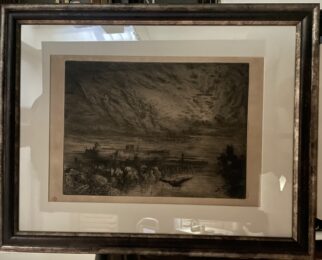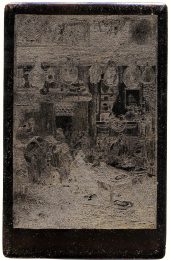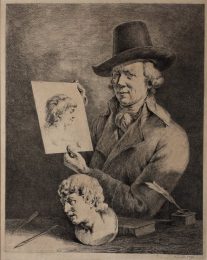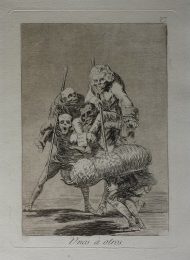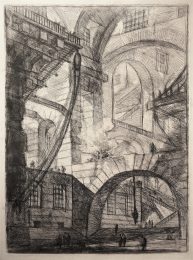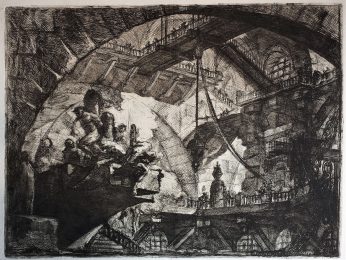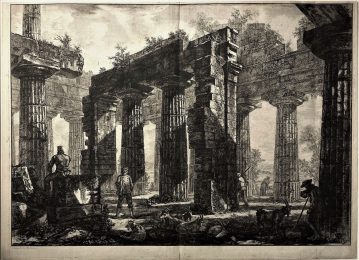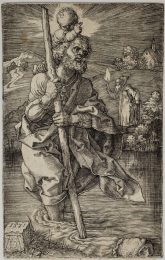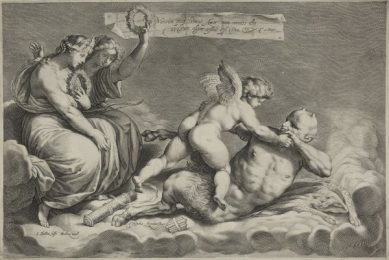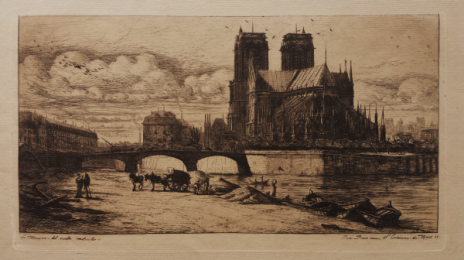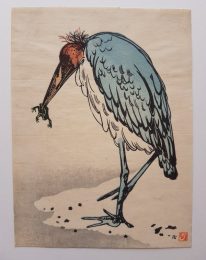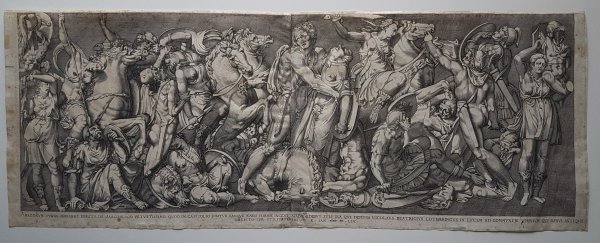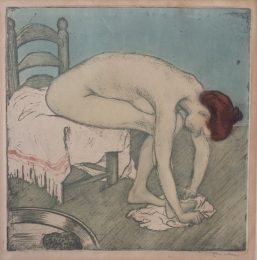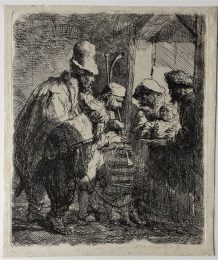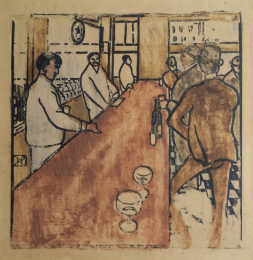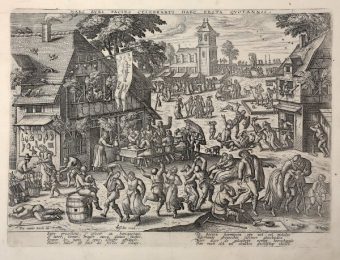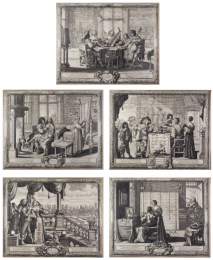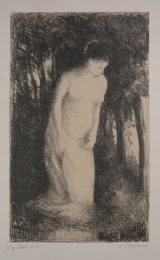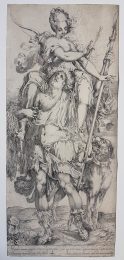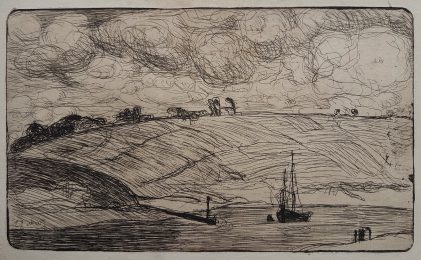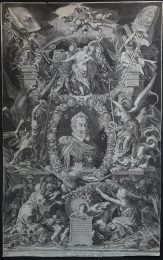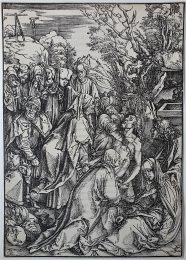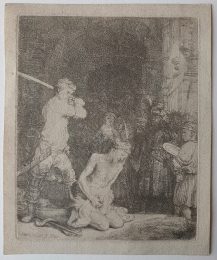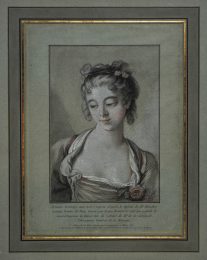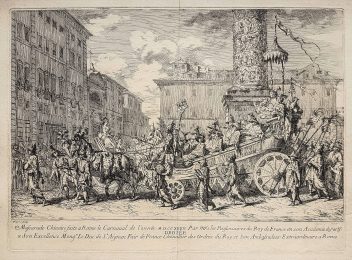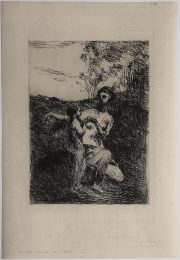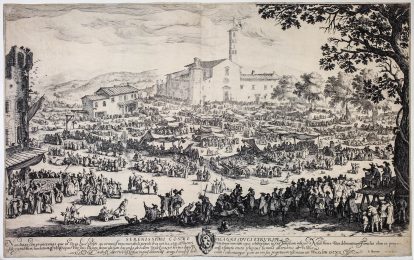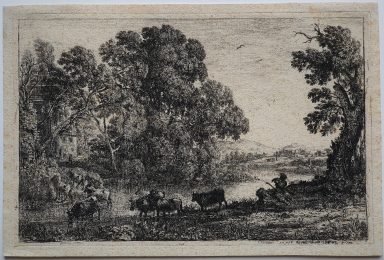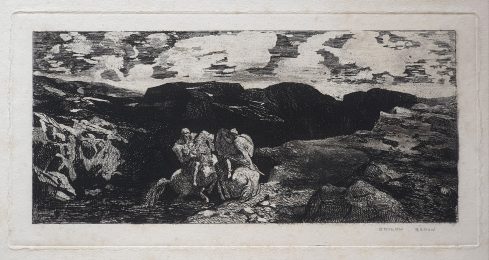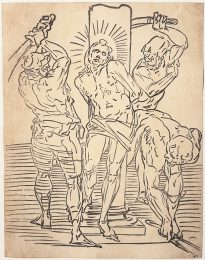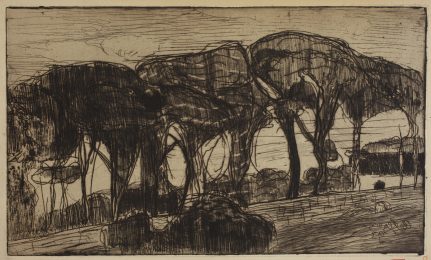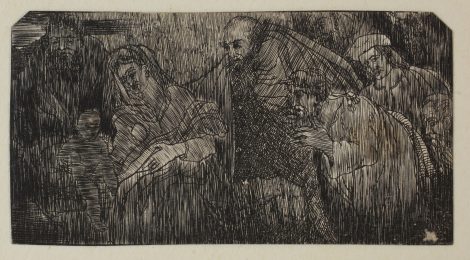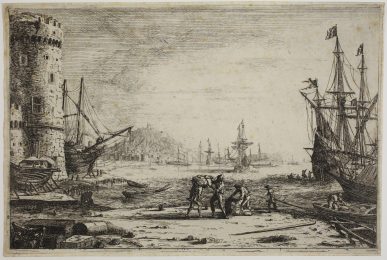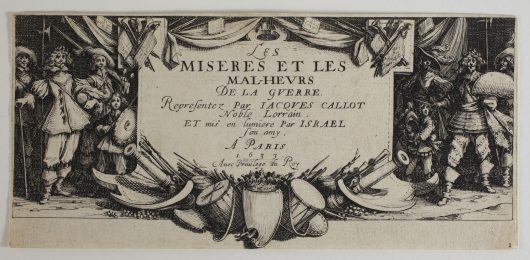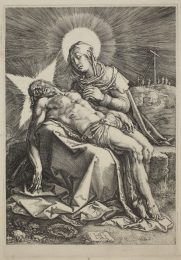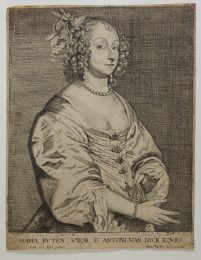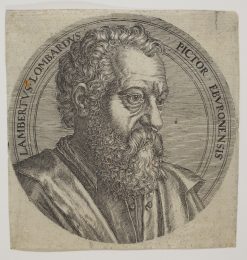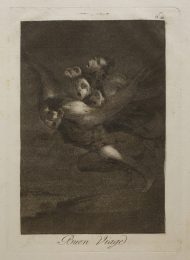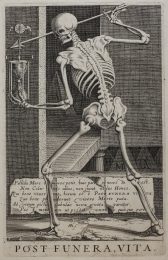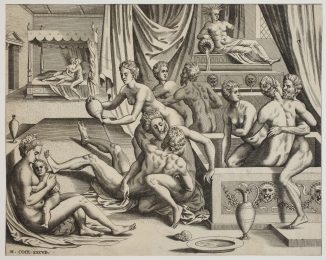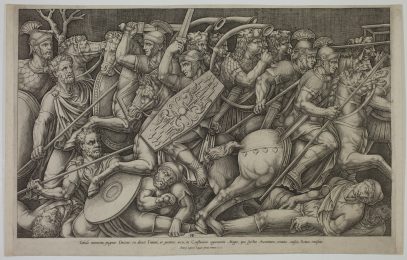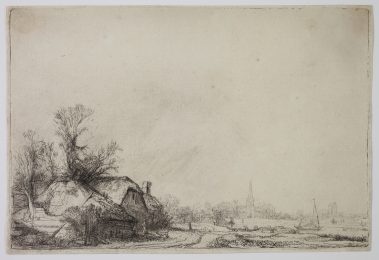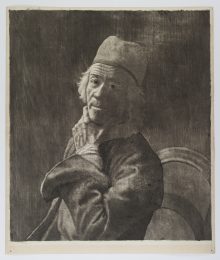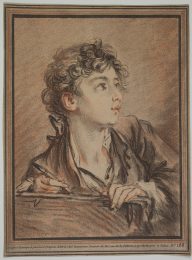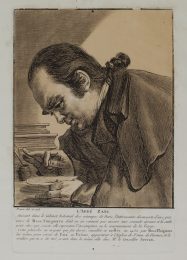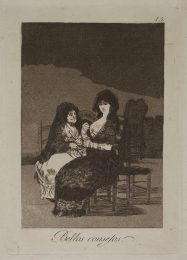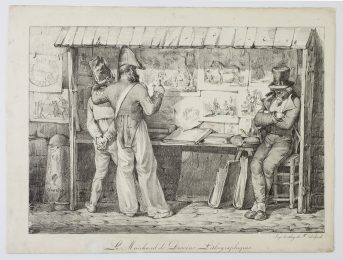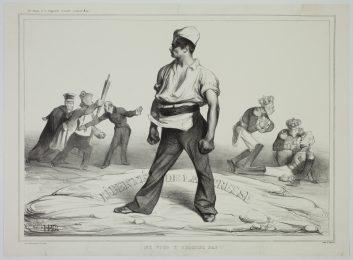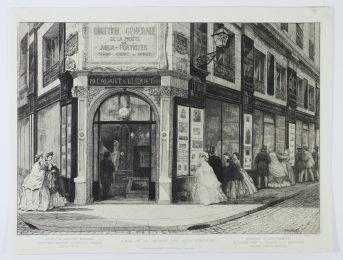Details — Click to read
Etching, drypoint and aquatint, 135 to 350 mm x 110 to 265 mm. Bourcard/Goodfriend 11 to 20.
Rare complete set comprising: eight plates in two folders, each illustrated with two plates, i.e. in total twelve impressions, while copies of this set sometimes only comprise ten impressions. This copy numbered 50 (on 100).
First folder: brown heavy laid paper (495 x 665 mm), with title piece by Henri Guérard printed on the cover and with a tailpiece printed on the back cover:
– Japonisme [Title]: B/G 11, 3rd state (of 3), printed in black
– [Ex-libris: Papillon et libellule]: B/G 20, 2nd state (of 3), printed in black
Second folder: laid paper watermarked ARCHES (448 x 635 mm), with the title piece by Henri Guérard printed on the cover and the tailpiece printed on the back cover:
– Japonisme [Title]: B/G 11, 3rd state (of 3), printed in red and inscribed 9 in pencil in the upper left corner and Ex n°50 in the bottom right corner
– [Ex-libris : Papillon et libellule]: B/G 20, 2nd state (of 3), printed in turquoise and inscribed 10 in pencil in the upper left corner
Inside plates, printed on laid paper watermarked MBM (sheets: 450 x 320 mm):
– Masque Bois sculpté [Masque en bois]: B/G 12, 4th state (of 4), printed in black
– Pharmacie Ivoire: B/G 13, 3rd state (of 4), printed in black
– Génie Bronze: B/G 14, 3rd state (of 3), printed in bronze green
– Boîte à Thé – Porcelaine: B/G 15, 4th state (of 4), printed in black
– Vase Étain Laqué: B/G 16, 3rd state (of 3), printed in bronze green
– [Cavalier Bronze]: B/G 17, 2nd state (of 3), printed in black, inscribed 6 in pencil in the upper left corner
– Bronze encrier [Crapaud Bronze]: B/G 18, 3rd state (of 4), printed in sepia
– [Barque de Dai-Ko-Ku, bois]: B/G 19, printed in black, inscribed 8 in pencil in the bottom left corner.
Inside plates are in perfect fresh condition. Inside cover in very good condition; a very small split on the fold. Some surface dirt, a few marginal tears and two stains in the first cover. Old inscription 100 F in pencil in the upper right corner.
« On April 10, 1883, the first major retrospective exhibition of Japanese art in the Western world opened in Paris at the Gallery Georges Petit on the rue de Sèze. It was comprised of paintings, ink drawings, bronzes, lacquers and woodblock illustrated albums, all dating from the ninth century through 1868, the year of the Meiji restoration. The exhibition was organized by Louis Gonse, Director of the Gazette des Beaux-Arts ; the art objects themselves were borrowed from the rich private collections of such longtime Japanophiles as Gonse, Philippe Burty, S. Bing, Theodore Duret, and Alphonse Hirsch. » (Phillip Dennis Cate, p. 64).
Around the same time, Félix Buhot published Japonisme, dix eaux-fortes, representing a selection of Japanese objects from Philippe Burty’s collection, exhibited at the Galerie Georges Petit. With the exception of Crapaud Bronze, the etchings do not date from 1883 but from 1875, as Buhot specified to Octave Uzanne on 4 April 1883 (quoted by Ph. D. Cate). By publishing the set in April 1883 under the title Japonisme, at the same time as Georges Petit’s exhibition, Buhot intended to participate in a common effort to encourage the general public to discover Japanese art and the studies that intellectuals such as Louis Gonse, Théodore Duret or Philippe Burty had been undertaking for several years.
An influential art critic in the second half of the 19th century, Philippe Burty contributed to the spread of “Japonisme”, a term he himself coined for the title of a series of articles published in 1872 in La Renaissance littéraire et artistique. The taste for Japanese art and culture was still described at that time as “Japonerie” or even “Japoniaiseries”, a portmanteau word with “Japon” and “niaiserie”, “nonsense, silly fad”. The term Japonisme only gradually gains recognition to designate the movement inspired by Japanese aesthetic. It appears in the Larousse dictionary of 1878 and in the Littré in 1886.
Phillip Dennis Cate cites an excerpt from an 1887/1888 article in which Philippe Burty discusses the genesis of the “Japonisme” series in 1875, when Buhot was still making his debut as an engraver: “ I placed at his disposal some of the choicest specimens from my collections of Japanese objects, which might guide him in the difficult rendering of forms, colors, or substances, and he etched some ten of them in a manner of which he may still be proud – Japonism – a new word coined to designate a new field of study, artistic, historic, and ethnographic – has never had a more intelligent or exact interpreter”. (Philippe Burty, « Félix Buhot, Painter and Etcher » quoted by Ph. D. Cate, p. 64)
The Japonisme plates are not the only ones that testify to Buhot’s interest in Japan. Le Poisson volant (Flying fish, B/G 52), Le Cabinet de lecture au Japon (Japanese reading room, B/G 53), La Marche Japonaise (Japanese march, B/G 84) for example, represent Japanese people. But the influence of Japanese art on Buhot does not only appear in the prints representing objects or customs. Phillip Dennis Cate notes the way he plays with Japanese codes, for example in the plate Cavalier Bronze (Bronze horse rider) where he “creates the effect of a Japanese print by superimposing a fan design and rectangular cartouches with Japanese characters describing the object.” He also suggests that the presence of cartouches and vignettes in Japanese art must have interested Buhot and reinforced his taste for remarques and symphonic margins in his own engravings. On the contrary, in Crapaud Bronze (Bronze Toad), engraved in 1883, the small inkwell appears less as an object than as an animal, against an atmospheric black background that is typical of Buhot’s landscapes. We can even see the moon shining in the night sky above the upside down toad. In this case, as Ph. D. Cate notes, “its Oriental identity is all but lost”.
References: Philippe Burty: « Félix Buhot, Painter and Etcher » in Harper’s New Monthly Magazine, LXXVI, February 1888, pp. 333-334; Phillip Dennis Cate: « Félix Buhot & Japonisme » in The Print Collector’s Newsletter, 1975, vol. 6, no.3, pp. 64-67.

